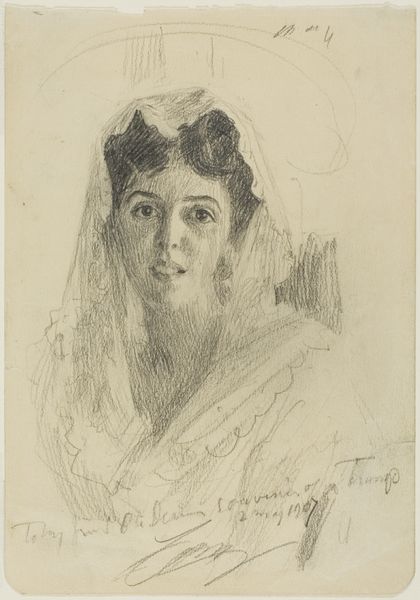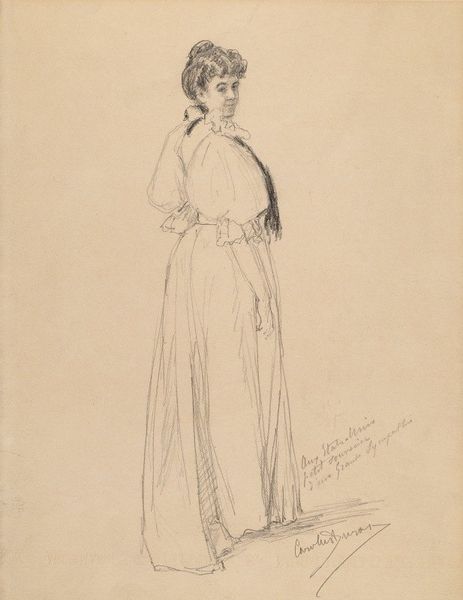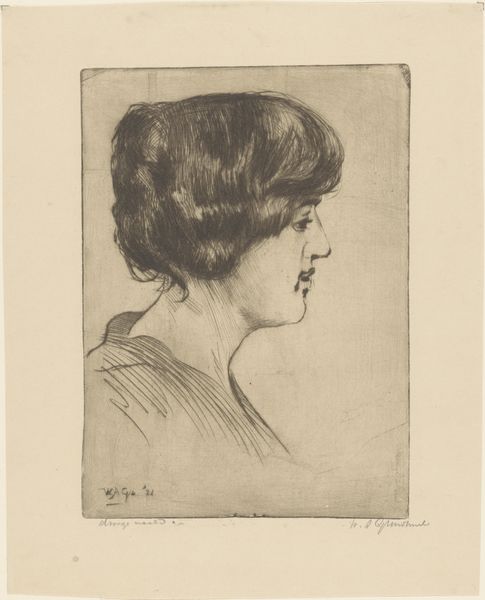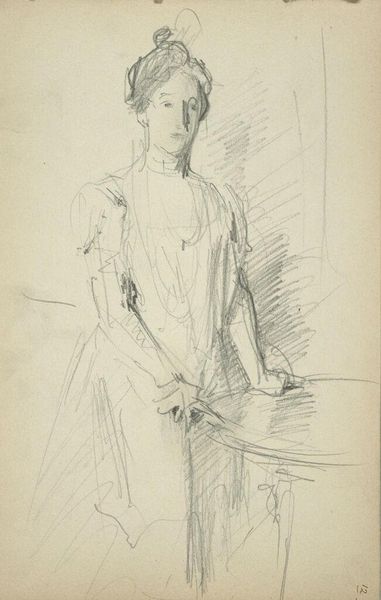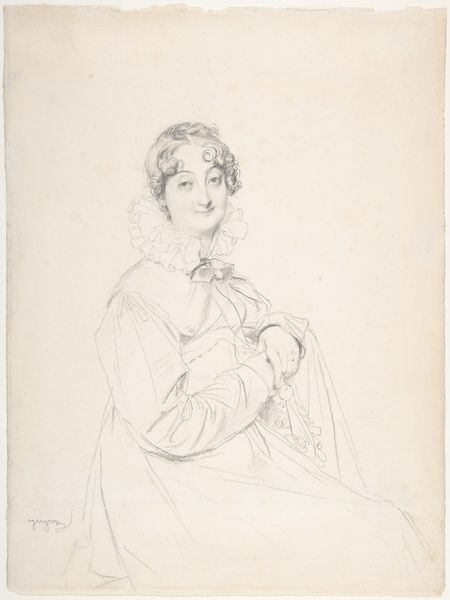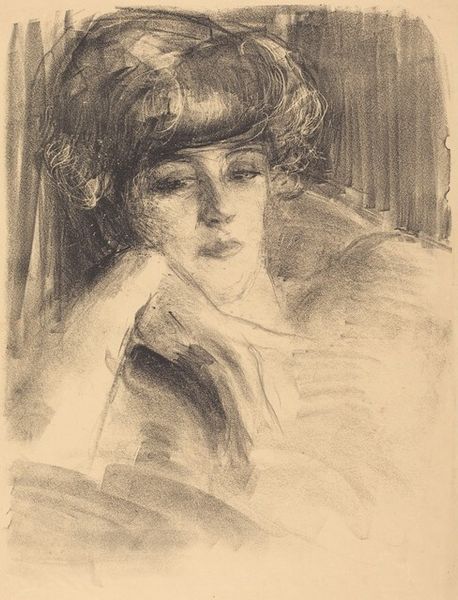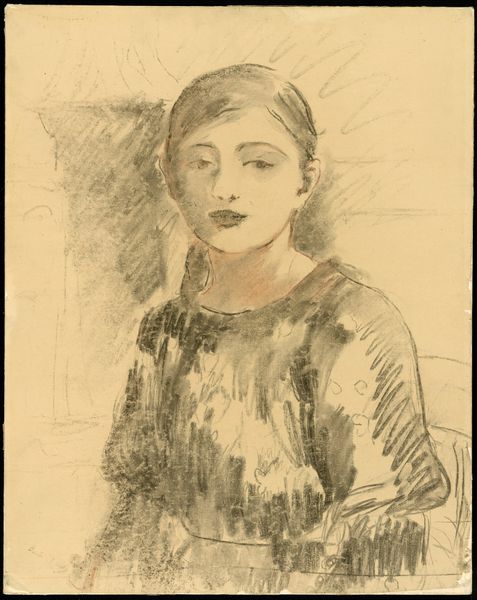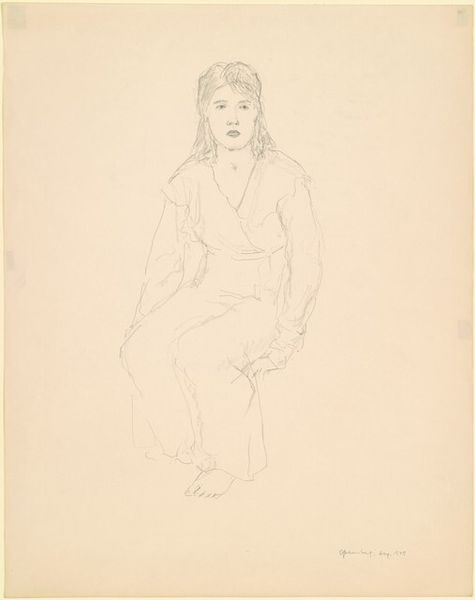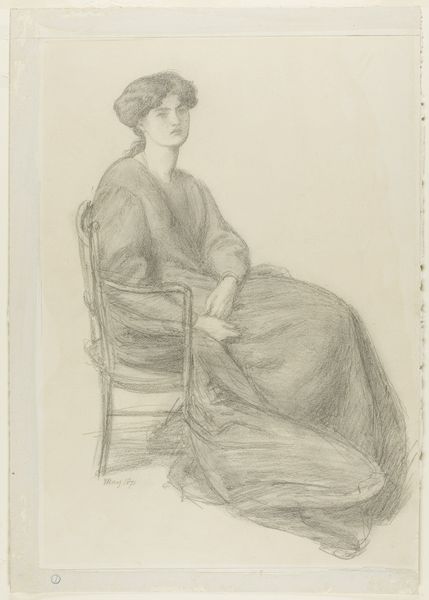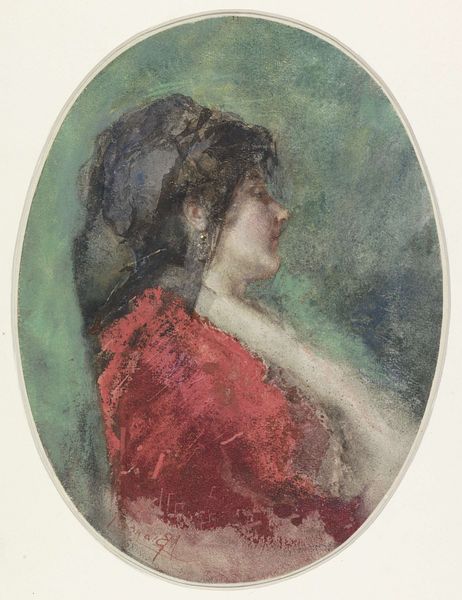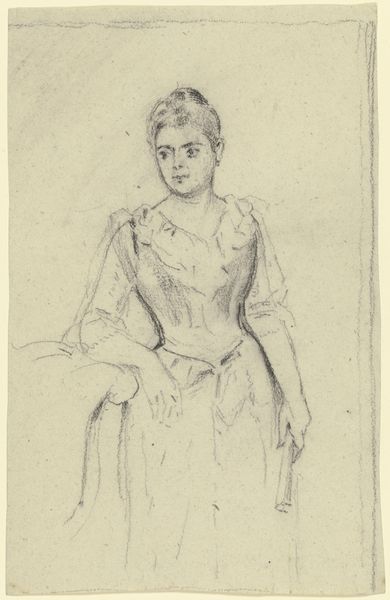
drawing, pencil
#
portrait
#
drawing
#
intimism
#
pencil
#
academic-art
#
realism
Copyright: Public domain US
Curator: Welcome. Here we have Pablo Picasso's 1918 pencil drawing, "Portrait of Madame Patri." It is currently held in a private collection. Editor: What strikes me immediately is the subdued mood. The delicate pencil lines create a sense of softness, almost fragility, which tempers any expectations of bombast typical with Picasso. The material presence of the drawing is light, understated. Curator: Indeed. Picasso made this work during a brief period of Realist exploration, nested in his broader Cubist development. If we carefully examine the composition, we note how Madame Patri is centered, almost enshrined, within the chair frame, lending formal weight. Note, too, the fine hatching to model volume, a classic academic device. Editor: It is intriguing how the raw paper itself contributes to the feel of unrefined immediacy. One wonders about the artist's relationship with the sitter. It’s not so much about idealized representation; instead, we witness the work and mark making that happens at the point of their exchange. Curator: I appreciate that you're focusing on process, for, while seemingly conventional, there is an emotional honesty to this work—the way he captures the quiet intensity of the sitter. It possesses, still, a certain analytical precision and reserved style so indicative of his evolving artistry. The subject appears still and self-contained. Editor: Absolutely. Thinking about his relationship to materials also prompts the questions – did paper of this texture impact his decision-making while rendering this portrait? Considering the economic realities and wartime austerity—what did drawing as a method signify to Picasso? Curator: A good point. His choice of materials reveals broader economic contexts, while emphasizing the intimate nature of drawing, as it enabled direct contact with the figure, an immediacy often lost in other methods. Editor: And, in viewing, our experience becomes one of almost intruding into a private moment, viewing the artist and the sitter both, made present through their materiality, rendered immediate again by the medium and artist's intimate practice. Curator: Ultimately, it invites contemplation not only of the figure but also the shifting grounds between intimate portraiture and academic convention. Editor: Leaving us to consider, finally, what can we extract through observation when we attend carefully to the labor and materials of drawing.
Comments
No comments
Be the first to comment and join the conversation on the ultimate creative platform.
